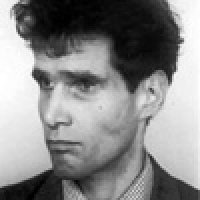Warsaw Pact: Wartime Statutes—Instruments of Soviet Control
A collection of recently declassified Central Intelligence Agency (CIA) documents demonstrates that in the early 1980s the U.S. government learned quickly of new Warsaw Pact planning instruments and accurately assessed the role that the Soviet Union's Warsaw Pact allies were expected to play in a conflict in Europe. The new CIA release confirms contemporaneous and later Western assumptions about the inner-workings of the military pact which was built to fight NATO, but was in fact used to suppress dissent within the Soviet empire.
Following introductory remarks by History and Public Policy Program Director Christian Ostermann, former CIA analyst Aris Pappas explained that the analytical documents in the collection reflected what had been an ongoing and contentious debate within the U.S. intelligence community on the military reliability of Non-Soviet Warsaw Pact (NSWP) forces. Some observers suggested that they were not likely to play a major role in a possible European conflict, while others pointed out that cautious military planning required NSWP forces to be taken seriously. While working as a CIA analyst himself, Pappas concluded that NSWP forces were likely to be at least initially reliable in the event of war, but that stiff and effective NATO resistance had the potential to undermine their will to fight during a protracted conflict.
Perhaps to decrease their own uncertainty on the core question of NSWP reliability, the USSR developed the 1980 wartime statute to formalize the procedures by which the Soviet Union would seize operational control over Eastern European military forces. However according to Harvard Cold War Studies Project Director Mark Kramer, it did little to change plans which had in fact been in place for years. Pointing to the Soviet-led Warsaw Pact invasion of Czechoslovakia, Kramer suggested that the actual preparations undertaken for the invasion in 1968 were very similar to procedures codified later in the 1980 statute. On the other hand, Kramer noted that the Warsaw Pact was a military alliance that was only used against internal enemies, as when the Soviet led Pact invaded Czechoslovakia in 1968, and threatened to invade Poland in 1981. How preparations for a war against NATO might have differed from these mobilizations against internal threats remains an open question.
When viewed in a broader Cold War context, Parallel History Project Coordinator Vojtech Mastny explained that the 1980 wartime statute—like its predecessor, the 1969 peacetime statute—was a product of its times. The peacetime statute—which codified the relationship between Warsaw Pact member states in times of peace—was drafted as a result of discussions among Warsaw Pact foreign ministers about the then-ongoing Conference on Security and Cooperation in Europe (CSCE) negotiations. Similarly the 1980 wartime statute, Mastny suggested, may have been a Soviet effort to ‘tighten the reigns' on its allies in response to the rise in international tensions which followed the collapse of détente in the late 1970s.
Romania, more than any other Warsaw Pact member state, chafed at these Soviet efforts to control its armed forces, and consistently opposed Soviet influence from the 1960s onward, according to former Romanian defense ministry advisor Larry Watts. Upon receiving the first draft of the 1980 wartime statute from the Soviets, Watts explained how the Romanians responded by returning it with line-by-line edits inserted into the text. In its propaganda, the USSR attempted to portray Romanian opposition to Soviet influence in the Warsaw Pact as mindless and reflexive. Instead, Watts posited that this resistance was part of a long-term Romanian strategy to make the Pact as democratic and consultative in its governance as its 1955 founding treaty stated it should be.
Despite Romania's efforts, Institute of World Politics Professor Walter Jajko pointed out that the ideals outlined in the 1955 Warsaw Treaty were never respected by the Soviet Union, and suggested that the Pact was most useful as an instrument for controlling Eastern Europe. Operationally speaking, in the event of a crisis, the Soviet general staff—comprised almost exclusively of Russians—would take charge of all NSWP armed forces. Down the chain of command, Jajko explained how Soviet operational groups were seconded to Eastern European commanders to monitor and ensure their compliance with Soviet orders.
As a CIA officer and former chairman of the National Intelligence Council, Fritz Ermarth had access to the CIA's recently declassified documents almost as they were produced and was an active consumer of the analysis produced by people like Aris Pappas. While Pappas in his talk characterized the documents as ‘confirmatory rather than revealing,' during the 1980s, Ermarth explained that they provided a wealth of Indications and Warning (I&W) information which was extremely useful at the time. Despite the tensions which then prevailed, reports and analytical documents from the new CIA release played an important role in assuring U.S. policy makers that a conflict with the Warsaw Pact was not on the horizon, and that the Cold War would remain cold.
Drafted by Tim McDonnell
Christian Ostermann, Director, History and Public Policy Program
Speakers

Former Adviser, Romanian Defense Ministry; Visiting Professor, Security Studies and Intelligence Analysis, University of Bucharest

Senior Adviser, Radio Free Europe/Radio Liberty; former Director, Radio Free Europe

Hosted By

Cold War International History Project
The Cold War International History Project supports the full and prompt release of historical materials by governments on all sides of the Cold War. Read more


History and Public Policy Program
A leader in making key foreign policy records accessible and fostering informed scholarship, analysis, and discussion on international affairs, past and present. Read more


Nuclear Proliferation International History Project
The Nuclear Proliferation International History Project is a global network of individuals and institutions engaged in the study of international nuclear history through archival documents, oral history interviews, and other empirical sources. Read more
